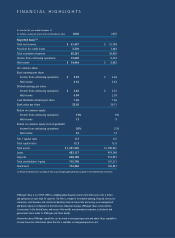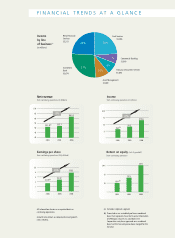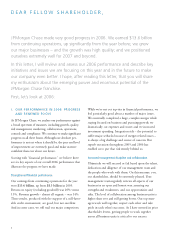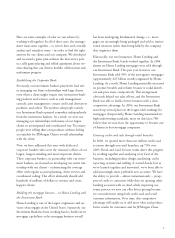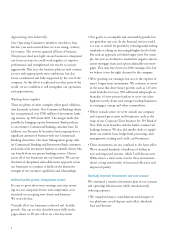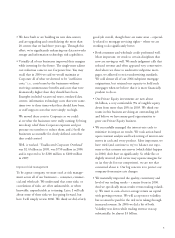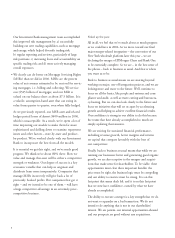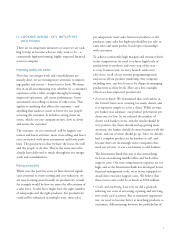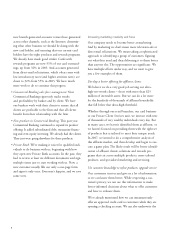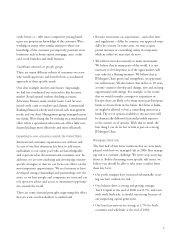JP Morgan Chase 2006 Annual Report Download - page 9
Download and view the complete annual report
Please find page 9 of the 2006 JP Morgan Chase annual report below. You can navigate through the pages in the report by either clicking on the pages listed below, or by using the keyword search tool below to find specific information within the annual report.7
II. LOOKING AHEAD: KEY INITIATIVES
AND ISSUES
There are six important initiatives or issues we are tack-
ling to help us become what we truly want to be – a
consistently high-performing, highly respected financial
services company.
Improving quality and service
Now that our merger work and consolidations are
mainly done, we are turning more attention to improv-
ing quality and service – from front to back. We mean
this in an all-encompassing way, whether it’s a customer’s
experience with a teller, straight-through processing,
improved operations, call center performance, better
automated cross-selling or dozens of other areas. This
applies to anything that affects the customer – and
anything that makes it easier or better for our people
servicing the customer. It includes cutting down on
errors, which cost our company money, slow us down
and annoy the customer.
The outcome, we are convinced, will be happier cus-
tomers and lower attrition, more cross-selling and lower
costs associated with more automation and fewer prob-
lems. The good news is that we have the focus, the will
and the people to do this. They’re the same ones who
already have delivered so much throughout our merger
work and consolidations.
Raising productivity
While over the past few years we have devoted signifi-
cant attention to waste-cutting and cost reduction, we
are now focusing more broadly on productivity overall.
An example would be how we assess the effectiveness of
a sales force. A sales force might have the right number
of salespeople and the right products, but productivity
could still be enhanced in multiple ways: more sales
per salesperson; more sales from new products or old
products; same sales but higher profitability per sale; or
same sales and same profits, but deeper relationships
with customers.
To achieve consistently high margins and returns relative
to the competition, we need to achieve high levels of
productivity everywhere and every step of the way –
at every business unit, in every branch, with every
sales force, in all of our systems programming units
and across all our product marketing. Any company,
including ours, can lose focus or be sloppy in managing
productivity at these levels. Here are a few examples
of how we have improved productivity:
•Investment Bank: We determined that our bankers in
the United States were covering too many clients, and
it is expensive simply to cover a client. While revenue
per banker was adequate, our product penetration per
client was too low. So we reduced the number of
clients each banker covers, and the results should be
very positive: the client should end up getting more
attention, the banker should do more business with the
client, and our revenue should go up. Since we already
had a complete product set for bankers to sell, and
because there are increasingly more companies that
need our services, it was a no-brainer to add bankers.
The Investment Bank this year is also intensifying
its focus on reducing middle-office and back-office
support costs. Our non-compensation expenses are too
high, and as the Investment Bank has developed better
financial management tools, we’re better equipped to
attack these excessive support costs. We believe that
these excess costs could be as much as $500 million.
•Credit card marketing: Last year we did a good job
reducing our costs of attracting, opening and servicing
new credit card accounts. But to maximize opportuni-
ties, we need to become better at matching products to
customers; differentiating between the profitability of


